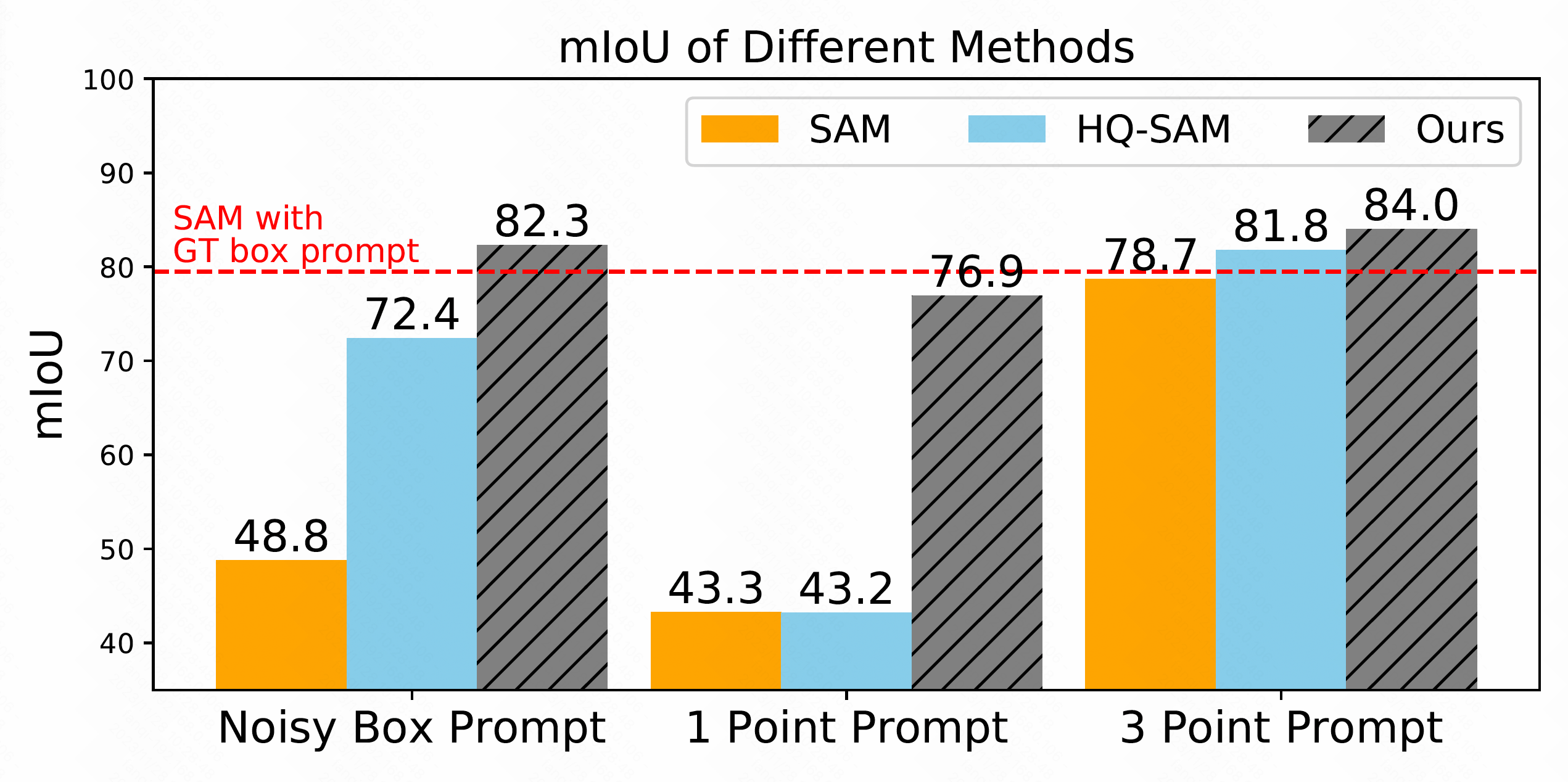Stable Segment Anything Model
The Segment Anything Model (SAM) achieves remarkable promptable segmentation given high-quality prompts which, however, often require good skills to specify. To make SAM robust to casual prompts, this paper presents the first comprehensive analysis on SAM's segmentation stability across a diverse spectrum of prompt qualities, notably imprecise bounding boxes and insufficient points. Our key finding reveals that given such low-quality prompts, SAM's mask decoder tends to activate image features that are biased towards the background or confined to specific object parts. To mitigate this issue, our key idea consists of calibrating solely SAM's mask attention by adjusting the sampling locations and amplitudes of image features, while the original SAM model architecture and weights remain unchanged. Consequently, our deformable sampling plugin (DSP) enables SAM to adaptively shift attention to the prompted target regions in a data-driven manner, facilitated by our effective robust training strategy (RTS). During inference, dynamic routing plugin (DRP) is proposed that toggles SAM between the deformable and regular grid sampling modes, conditioned on the input prompt quality. Thus, our solution, termed Stable-SAM, offers several advantages: 1) improved SAM's segmentation stability across a wide range of prompt qualities, while 2) retaining SAM's powerful promptable segmentation efficiency and generality, with 3) minimal learnable parameters (0.08 M) and fast adaptation (by 1 training epoch). Extensive experiments across multiple datasets validate the effectiveness and advantages of our approach, underscoring Stable-SAM as a more robust solution for segmenting anything. Codes will be released upon acceptance. https://github.com/fanq15/Stable-SAM
PDF Abstract

 MS COCO
MS COCO
 SA-1B
SA-1B
 HRSOD
HRSOD